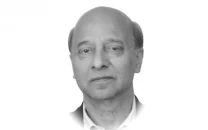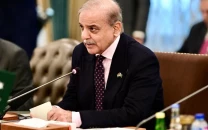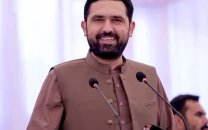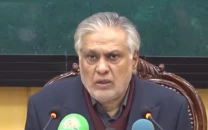Secular vision
The only possibility to save Pakistan is to go back to Jinnah's vision and carve out a secular democratic state.

Secular vision
It is worthwhile to remind the Pakistani people that the Munir commission, which was formed to find the causes behind the anti-Ahmadi agitation, pointedly asked the most obvious of questions about the maltreatment of minorities; if we make Hindus into second class citizens then what do we expect to happen to Indian Muslims? Moulana Moududi airily said that it was for India alone to decide how to treat its Muslim citizens, as if Pakistan’s behaviour had no effect on such decisions. The Indians, stated Moudodi, are even at liberty to treat Muslims as Shudra, low caste, if they so wish.
Jinnah also asked the secretary of law of Pakistan, Edward Alec Snelson, who was also the first draftsman in the government, to write a draft of a constitution, one which carefully guaranteed maximum autonomy for East Pakistan. Snelson, is reported to have sketched outlines in which he urged maximum room of manoeuvre for East Pakistan. These recommendations, mysteriously, are nowhere to be found today in the otherwise carefully kept archives. Pakistanis simply were not prepared to accept for some forty years that Jinnah agreed with Suharwardy that he should work for a united Bengal, independent of Pakistan, a goal to which Congress under the influence of Gandhi did not agree ether.
The essential wishes of the founder of the country were quickly erased or shunted aside after his death. Liaqat Ali Khan, the prime minister, brought in the Objectives Resolution which imparted an Islamic bias to the laws and tragically laid the foundation of future sectarian and communal conflict.
During the last sixty-three years, three constitutions were made but the spectre of the Objectives Resolution burdened them all. After the separation of East Pakistan, Bhutto produced the constitution of 1973, with the help of the National Awami Party, which he himself later mutilated. Zia finished the job on whatever was left of the ‘73 document. The Peoples Party wanted to go back to the mutilated constitution but not the original one passed in 1973. At the moment there is no governance.
Hindus, Christians and the Ahamdis are sidelined and it looks as if they have no future here. They have become permanent second class citizens. Last month saw the killing of Shias in Quetta and Lahore when their processions were attacked, while dozens of Shia doctors were objects of targeted killings. Ethnic groups are also highly critical of each other. Political leaders are not disposed to take a bold national stand, which gives the impression that they hardly know what a national outlook is and what is not. Minorities are completely alienated and now the biggest sectarian minority, the Shiites, are facing great danger to its existence. Both Zia and Bhutto were responsible for putting discriminatory laws on the statute book.
The only possibility to save Pakistan is to go back to Jinnah on August 11, 1947 and carve out a secular democratic state. We will need a new constituent assembly, a task which can be accomplished through consultation between the army, judiciary and parliament. The time limit to frame a new constitution should be no more than six months. A secular constitution is the only alternative which would also satisfy the regional demands of the Balochis and Sindhis, and keep faith with Jinnah.
Published in The Express Tribune, October 11th, 2010.















COMMENTS
Comments are moderated and generally will be posted if they are on-topic and not abusive.
For more information, please see our Comments FAQ